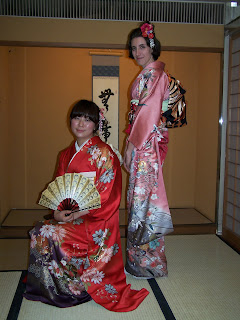
I feel there is a lot lost in translation between English and Japanese (and I add my fair share translating it back into English), which is why trekking the Miura Alps is not quite as awe inspiring as it sounds.
Alps are, in Japan, any mountain range, and this streaches the definition of 'mountain' to near breaking point. The Miura Alps are the mountain range that run down the center of Miura peninsula, with a culminating peak is at just over 200m (that is 2 hundred, yes).

Having searched rather in vain on internet for new walking paths in the hills behind Oppama and Kanazawa-hakei, I was pleased to happen upon a map of a new hiking trail in Zushi! _Turns out I should have been searching for trekking courses, not hiking courses!_
My enthousiasm quickly waned when I discovered, using my 'real' map (a street map made by a company, and therefore showing nearly all the roads and paths of Zushi city), that this path was mainly on paved roads, except for a small excursion into what appeared to be a sports complex.
Determined to try out the path anyway (one never knows!), I found a few little detours on the 'real' map, that I thought might be interesting.

So early this morning, I set off my lunch, map and camera for Zushi. By train. From the Keikyu station, I then wandered down a part of Zushi I had never been in before, with an odd assortment of very very old, beautiful wooden houses, and very modern 'architect' houses.
The first of my detours I never found, as where it was shown to start on my map turned out to be a cemetary, and I had no intention of wandering among the graves looking for my path.
So back to my 'hiking course', which was, at this point, the main road going through a long tunnel between Zushi and Hayama. In the tunnel, I passed a group of people all holding the same printed out map of the Zushi hiking course. Now I walk faster than most japanese, but like to stop and take photos and such, so for the next 10 minutes we kept overtaking each other.

Then, my second detour loomed large in front of me. This path also started next to a shrine, but it was clearly marked, and so up up I went. As my confidence in reading, or at least deciphering kenji increases, so does the size of my hiking paths decrease.

But the paths are always well marked, and it gave me plenty of excuses for a breather to have to stop and get out my map to match up the kanji on the sign with the kanji on my map. This is not always possible, as my 'real' map is a road map, and so doesn not necessarily mark the name of every hill, especially if they are not accessible by car.

A forest fire extinction tank and bucket.
By this method I made my way easily up to the top of my 'detour' mountain, and found that, as hoped, there was another way down. My 'real' map showed a dead end, but so far during my rambles in Japan, I have never encountered a well-marked dead end. They will attach a rope to a tree and have you rapel down a cliff face rather than have you go back the way you came.

This new route continued on to 二子山, top and bottom. 二子山 bottom being the smaller of the 2 mountains, the taller one being the culminating point of the Miura Alps, at 207.8m. From there, a wonderful view of Tokyo Bay, again all the way to Tokyo. I shall have to add that new Sky Tree to my list of landmarks, in with Oppama's red Yokosan, and the big Sumitomo things.

Then down to a small stream, and following the stream to its source gradually got closer to Taura. More beautiful forests,






more wonderful views of Tokyo Bay,

even a glimpse of Fuji-san, right behind 二子山, and the path opens up to the uppermost part of the Taura plum grove.

Fuji-san, between the tower and the twigs _ white with snow.
Despite being much less lost these days, Taura plum grove is still no where near any station, and so it was still another 30 minutes' walk to finally get to the station. Taura being in Yokosuka city, I kept walking off the edge of my map, but finally recognized a road I had taken on my first bicycle outing. As I had also been lost last time, it wasn't much help, but I eventually wandered back into the map zone, and finally caught a train home.

Miura peninsula is only 10km wide, and the highest peak is hardly more than a hill, but if you take the detours, you can walk for 5 hours without seeing a paved road, and your muscles will tell you that 150m-tall hills are quite a climb, if you go up (and down!) enough of them!





































